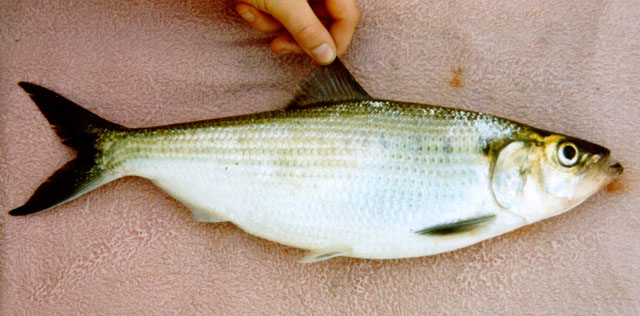| Clupeidae (Herrings, shads, sardines, menhadens), subfamily: Alosinae |
| 60 cm SL (male/unsexed) |
|
pelagic-neritic, anadromous |
| Western Atlantic: along the coast from Maine to the St. John's River, Florida. Also in rivers. |
|
Dorsal spines (total): 0-0; Dorsal soft rays (total): 15-20; Anal spines: 0-0; Anal soft rays: 19-23; Vertebrae: 53-55. Belly with distinct keel of scutes. Lower jaw very prominent, but not rising steeply within mouth; teeth reduced or in upper jaw absent in fishes over 23 cm standard length. A dark spot on shoulder, several obscure dark spots along flank (sometimes missing). Closely resembles A. chrysochloris which has stronger jaw teeth, no shoulder spot and the body depth less than head length (Ref. 188). Silvery, with a dark grayish green back (Ref. 7251). |
| Schools of adults are found in marine waters, along the coast; also estuaries, tidal rivers and tributaries during late spring and early summer (Ref. 4639). Juveniles tend to leave nursery areas during summer (Ref. 4639). Feed on small fishes, also squid, small crabs and other crustaceans, as well as fish eggs. Spawn in tidal freshwater (Patuxent River, Chesapeake Bay in May) (Ref. 188), and return to the sea shortly after (Ref. 4639). Parasites found are nematodes, cestodes and trematodes (Ref. 37032). |
|
(Ref. 96402)
|
| harmless |
|
Source and more info: www.fishbase.org. For personal, classroom, and other internal use only. Not for publication.
Page created by Jen, 05.08.02,
php script by kbanasihan 06/09/2010 ,
last modified by
dsantos, 20/08/10

